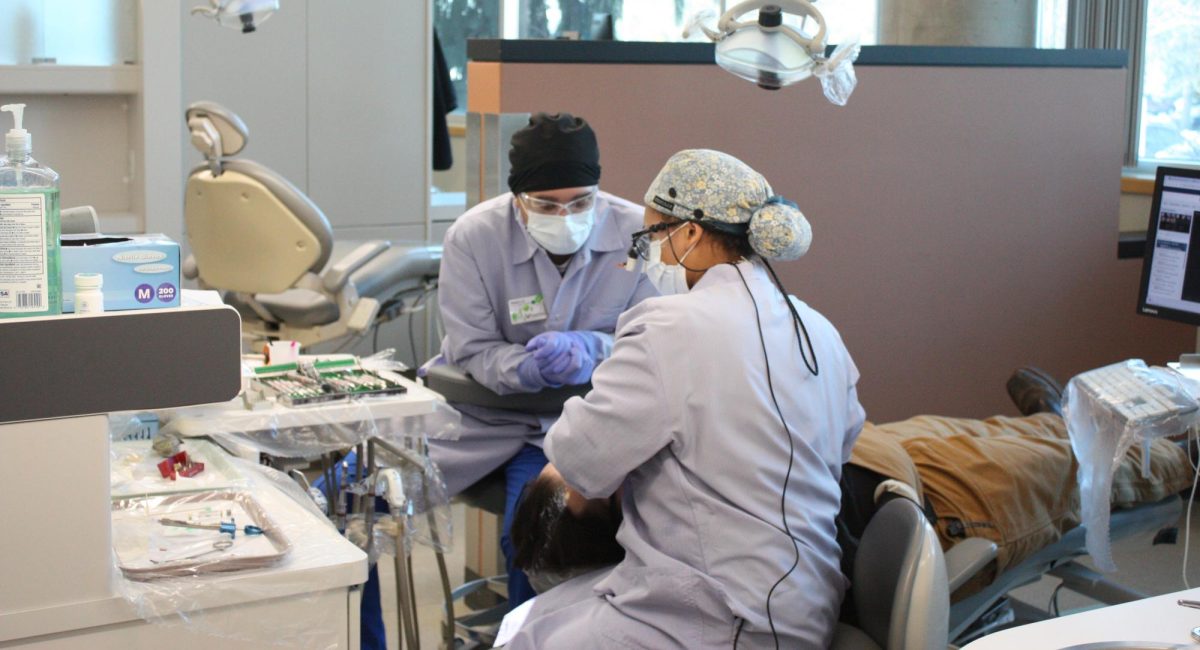Human trafficking hits closer to home than you might think
Washington state ranks third highest in nation
May 25, 2013

Phillip Martin, national director for Compasion2One, shares a presentation about human trafficking in the Northwest May 16 in the JFK Library.
Human trafficking is an issue we hear about in the news occasionally, but it is generally not something we think about happening in the U.S., let alone Washington state.
Organizations like Seattle-based Compassion 2 One are working hard to raise awareness about the issue, and director Philip Martin spoke to Eastern students May 16 to do just that.
“I heard about this [issue] and felt called to take action,” Martin said.
Maria McGrew, of student activities, who organized the event, said awareness was the main goal. “We’re learning that this is an issue in our country, and a lot of people think it’s not,” she said. “We just wanted to educate students and inspire people to do whatever they can do [to help].”
Martin has been involved with the fight against human trafficking for the past six years. After graduating from college and attending ministry school, he became a pastor in Seattle. There he met a youth pastor who introduced him to the alarming issue of human trafficking.
“It’s been a journey over the past several years. My life looks completely different than it did six years ago,” he said.
He began working with the nonprofit Compassion 2 One, which aims to rescue children around the world from sexual exploitation and provide rescued victims the life of safety and joy every child deserves, according to its website.
Martin said 500 to 700 young people are trafficked every week in Seattle. The average age is between 11 and 16 years old.
He shared the story of a 15-year-old girl who spent 108 days as a sex trafficking victim. She was sold on an adult service website, and her pimp drove her to various customers in the Puget Sound area. She was eventually freed when an undercover sting busted her pimp in Seattle.
Though she has been out of trafficking for more than a year, she is still recovering from the ordeal. Compassion 2 One has been working with her and her family through the recovery process.
“We’ve been working with her mom. She’s been very involved in the legislation, trying to pass new laws,” Martin said. “That’s the way that she heals is to help those other girls and to be a mouthpiece for her daughter and for others.”
Martin said it is very common for victims to come from unstable families because their vulnerability makes them easy targets for traffickers.
Traffickers will lure them away with the promise of luxurious lifestyles, which can be appealing when life at home is not, Martin said.
“These guys want a girl who comes from a family that’s not supporting her, … or if there’s domestic violence,” he said. “There’s a lot of different factors as to why they go after a certain type of girl.”
The advent of the Internet has made human trafficking even easier for organizers to work “under the radar.”
“Even social media is being used to lure these girls away from their families and into prostitution. That’s why the dollar amount is where it is, and that’s why our trafficking rate is so high,” Martin said.
He said on average, girls are sold for $20 to $50, and that a pimp can easily make more than $1 million in a year.
“It’s very lucrative. She’s not keeping any money. He might buy her some clothes or some food just to keep her going, but it’s not for her own benefit,” Martin said.
Though it is an ongoing issue, Martin said his organization has raised awareness considerably. “This used to be very underground, very dark, very secretive. Over the past several years, we’ve made a drastic impact,” he said.
Currently, they are working to provide more aftercare facilities for girls who escape from the trafficking lifestyle, as well as raising money for direct services like food, clothing and counseling.
“Everyday people can be the ones making the difference,” he said. “It’s not just up to nonprofit organizations or law enforcement, first responders or social workers. The only way we’re going to end trafficking is if everyone is involved.”








